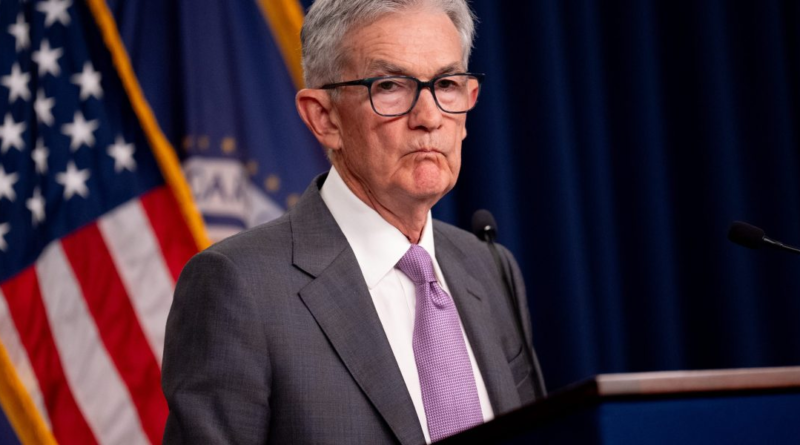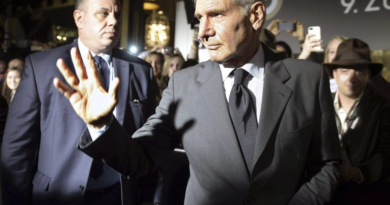Wall Street wanted a September rate cut—instead it got a ‘baby step’ and stocks are hurting as a result
Today, the stock market is feeling the consequences.
This week the Federal Open Market Committee (FOMC) met to discuss the base interest rate, which currently sits at a more than two-decade high.
While analysts were largely prepared to hear a cut of the rate—currently targeted at 5.25% to 5.5%—wouldn’t come this month, they were waiting on a veiled nod that the committee’s next meeting would bring such relief next month.
Wall Street is hankering after a rate cut for a range of reasons, but the key concern is that if the Fed cuts rates too late — keeping the supply of money too tight for too long — it will stifle consumer spending and business capital expenditure, grinding the economy to a halt and leading to a rise in unemployment.
On the flipside, lower rates would mean cheaper borrowing and higher levels of consumer consumption.
But instead of Powell dropping hints about a Q3 cut, analysts got a “baby step,” said Santander’s chief U.S. economist, Stephen Stanley.
“Chairman Powell emphasized in his press conference that recent data on inflation have ‘added to’ the Fed’s confidence that inflation will return to the 2% target, but the Fed is not there yet,” he wrote in a note seen by Fortune.
While the market had priced in a September cut, Stanley believes the news will come in November. “I am skeptical that the key economic data over the next seven weeks are going to add to the FOMC’s confidence,” he wrote.
Likewise, Bank of America—even prior to the Fed’s July meeting—is not pricing in a rate cut until December.
Yesterday credit strategist Yuri Seliger wrote in a note seen by Fortune that while Powell’s comments “largely agreed” with a September cut, there is a key caveat: that timing is “assuming no big surprises on inflation.”
A day prior, Seliger’s colleagues—U.S. economist Michael Gapen, rates strategist Mark Cabana, and FX strategist Alex Cohen—wrote: “In our view, the main message from the July FOMC meeting is that the Fed is getting closer to a rate cut, but needs more evidence that inflation is under control before it does.
“[Powell] indicated that there was increased confidence within the committee that a September rate cut could happen, but data between now and then would have to validate the Fed’s expectation. We think the Fed can be patient and wait for more evidence.”
The less emphatic evidence of a September cut is likely one of many reasons the global stock market took such a heavy hit over the last few hours.
At the time of writing the S&P500 is down 1.4% over the past 24 hours, while the Nasdaq is down 2.3% over the same time period.
While some of this slump may be given a lackluster earnings call from Magnificent 7 stock Amazon, traders are also likely getting the creeping sense that the Fed may hang on too long.
‘Hedging bets is standard practice’
“We haven’t made any decisions,” Powell told reporters in a press conference following the FOMC meeting this week. “I don’t know what the data will reveal or how that will affect the appropriate path of our policy.”
While such a statement may have taken the wind out of other analysts’ sails, Mike Pugliese, senior economist at Wells Fargo, told Fortune he had a more balanced outlook.
“I am confident that the FOMC will cut rates in September,” he said. “It is true that Chair Powell and the rest of the FOMC are hedging their bets, but that is standard practice in this kind of situation. It would be highly unusual for them to explicitly commit to a rate cut a full meeting in advance.
“When reading between the lines, the signals were there yesterday, and the recent data for both the labor market and inflation suggest that a rate cut will be warranted at the next meeting.”
The stock market’s overnight tumble might look tame compared to the upset that could come in September if the cut doesn’t materialize.
“It is hard to speculate on what the impact would be if the Fed did not cut rates in September because we do not have the economic data that will be released between now and then,” Pugliese added. “For example, if the employment reports to be released on August 2 and September 6 are exceptionally strong and the next two CPI reports are also very ‘hot,’ then that would have different implications compared to a scenario where the economic data were generally weak between now and the Sept FOMC meeting but the Committee still chose not to cut rates.
“Based on what we know now, no rate cut in September would come as a major surprise to us and to financial markets. Financial conditions likely would tighten if the FOMC adopted an unexpectedly hawkish stance over the next seven weeks.”
Over at UBS Brian Rose, senior U.S. economist, is maintaining a milder stance on his previous statement that the market is pricing in “a near-100% chance of a September cut.”
Yesterday in a note seen by Fortune, Rose added: “Our view remains that the upcoming data will be soft enough for the Fed to start trimming rates by 25 basis points quarter, but not so bad that they would want to cut at a more aggressive pace. However, risks are asymmetric.”



